顺序表和单链表的对比分析
Posted -glb
tags:
篇首语:本文由小常识网(cha138.com)小编为大家整理,主要介绍了顺序表和单链表的对比分析相关的知识,希望对你有一定的参考价值。
问题:
如何判断某个数据元素是否存在于线性表中?
for(int i=0; i<list.length(); i++)
{
if(list.get(i) == v)
{
cout << "find it" <<endl;
}
}
遗失的操作——find
-可以为线性表(List)增加一个查找操作
-int find(const T& e) const;
参数:
待查找的数据元素
返回值:
>=0: 数据元素在线性表中第一次出现的位置
-1:数据元素不存在
在List.h中新增一个纯虚函数:
virtual int find(const T& e) const = 0;
因为LinkList.h和SeqList.h是List.h的子类,因此需要在LinkList.h和SeqList.h中将find纯虚函数实现:
LinkList.h
int find(const T& e)const
{
int ret = -1;
int i=0;
Node* node = m_header.next;
while(node)
{
if(node->value == e)
{
ret = i;
break;
}
else
{
node = node->next;
i++;
}
}
return ret;
}
SeqList.h
int find(const T& e) const
{
int ret = -1;
for(int i=0; i<m_length; i++)
{
if(m_array[i] == v)
{
ret = i;
break;
}
}
return ret;
}
测试:
(1)基本类型的测试
LinkList<int> list;
for(int i=0; i<5; i++)
{
list.insert(0,i);
}
cout << list.find(5) << endl;
基本类型的测试是OK的
(2)自定义类类型的测试
在main.cpp中添加下面的代码:
class Test
{
int i;
public:
Test(int v=0)
{
i = v;
}
};
int main()
{
Test t1(1);
Test t2(2);
Test t3(3);
LinkList<Test> list;
return 0;
}
进行编译,会出现如下错误:
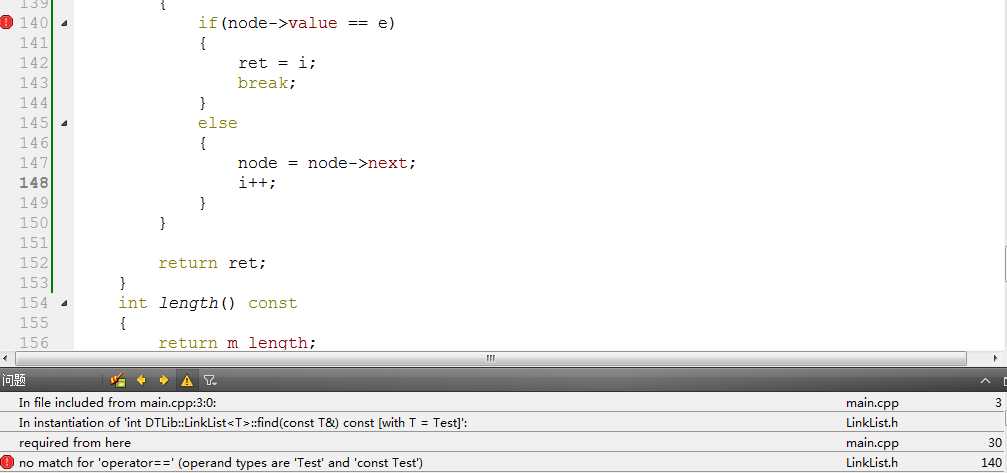
比较两个Test对象是否相等,并没有重载相等操作符。
暂且做一件没有意义的事,只是让代码编译过去。
class Test
{
int i;
public:
Test(int v=0)
{
i = v;
}
bool operator == (const Test& e)
{
return true;
}
};
这样虽然可以编译通过,但是这样做不好,不值得推荐。
我们可以在顶层的父类中实现相等和不相等操作符的重载函数
Object.h
bool operator == (const Object& obj);
bool operator != (const Object& obj);
Object.cpp
bool Object::operator ==(const Object& obj)
{
return (this == &obj); //比较地址是最好的选择
}
bool Object::operator !=(const Object& obj)
{
return (this != &obj);
}
在main.cpp中:
class Test : public Object //将自定义类继承于Object,是为了避免编译错误。
{
int i;
public:
Test(int v=0)
{
i = v;
}
bool operator ==(const Test& e) //判断两个对象的依据是判断对象的成员变量i是否相等,需要重新实现operator ==()函数
{
return (i == e.i);
}
};
int main()
{
Test t1(1);
Test t2(2);
Test t3(3);
LinkList<Test> list;
list.insert(t1);
list.insert(t2);
list.insert(t3);
cout << list.find(t2) <<endl;
return 0;
}
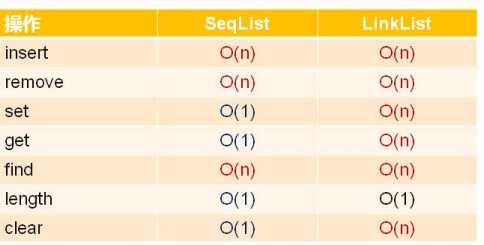
从这个表中可以看出,单链表的时间复杂度相比顺序表没有什么优势,反而更差,那么忙工程中为什么单链表会使用的比较多呢?
有趣的问题:
顺序表的整体时间复杂度比单链表要低,那么单链表还有使用价值吗?

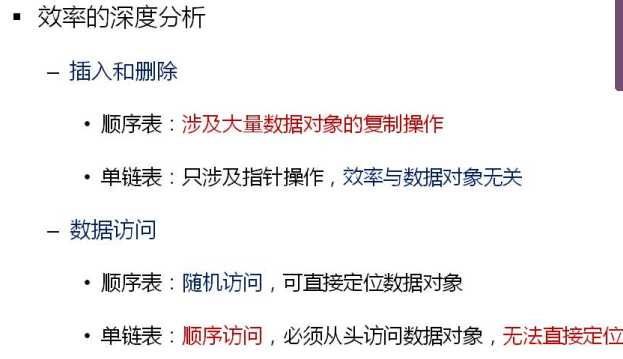
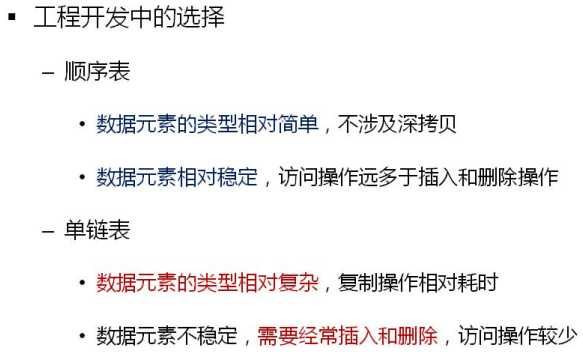
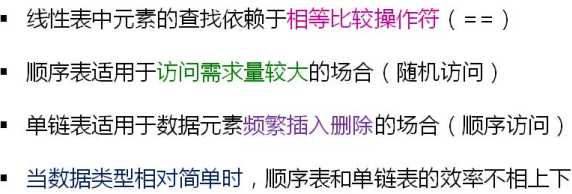
以上是关于顺序表和单链表的对比分析的主要内容,如果未能解决你的问题,请参考以下文章